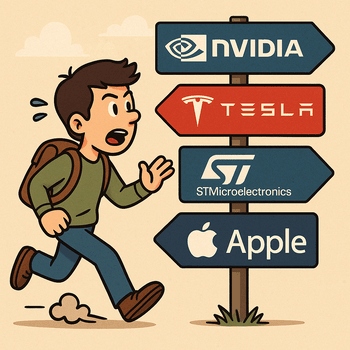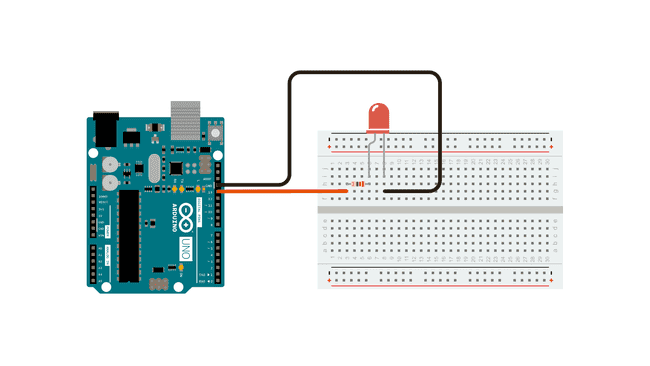If you’re dreaming of landing a role in embedded systems at companies like NVIDIA, Tesla, STMicroelectronics, or Apple, the first thing to understand is that embedded engineering isn’t just about writing code or soldering boards. It’s about knowing how the entire stack—from silicon up to cloud integration—fits together. The industry has matured to the point where “just being good at C” won’t cut it. The best tech companies are looking for engineers who understand the ecosystem and can adapt to modern practices.
The Embedded Mindset
Unlike traditional software development, embedded engineering forces you to think in constraints. You’re balancing memory, power, timing, and hardware quirks while still delivering reliable, scalable solutions. This constraint-driven problem-solving is what separates strong embedded engineers from general software devs. Companies will often probe this mindset in interviews—can you optimize for performance without bloating power consumption? Can you debug firmware when all you have is a logic analyzer and an LED?
Core Skills Every Embedded Engineer Needs
Let’s be blunt: if you want to compete at the top, you need more than blinking LEDs on an Arduino. Here are the industry-standard practices that companies expect:
- Low-Level Programming Mastery
C is still king, with C++ widely used for more complex systems. Rust is making inroads for safety-critical designs. You should be able to write drivers, optimize memory use, and understand compiler output. - Real-Time Operating Systems (RTOS)
Companies expect familiarity with FreeRTOS, Zephyr, or proprietary RTOS platforms. Knowing how to schedule tasks, manage interrupts, and handle concurrency is crucial. - Hardware-Software Co-Design
You don’t need to be an electrical engineer, but you should be able to read schematics, understand datasheets, and debug with an oscilloscope or logic analyzer. Industry engineers constantly collaborate with hardware teams. - Connectivity and Protocols
UART, SPI, I²C, CAN, Ethernet, BLE, and Wi-Fi. These aren’t just acronyms—they’re the lifeblood of modern systems. Top companies expect you to configure, optimize, and troubleshoot these protocols without blinking. - Testing and CI/CD for Embedded
The days of “test it on hardware and hope it works” are gone. Continuous integration, hardware-in-the-loop testing, and simulation environments (like QEMU or Renode) are becoming standard. Companies want engineers who value verification as much as coding.
Industry Practices That Define Success
Top tech companies also look at how you work, not just what you know:
- Version Control & Collaboration: Git fluency is a baseline. You’ll be expected to follow code review best practices and work within large, distributed teams.
- Documentation-Driven Development: Writing clean, maintainable code is expected, but backing it up with thorough documentation is what makes you stand out.
- Security by Design: Whether it’s secure boot, cryptography, or OTA updates, security is baked into embedded systems from day one. Weak security is a dealbreaker.
- Energy Efficiency Obsession: From wearables to EVs, companies love engineers who can shave microamps off a design without compromising functionality.
- AI at the Edge Awareness: NVIDIA and similar firms are pushing embedded AI accelerators. Understanding how to run inference on constrained hardware is becoming a key differentiator.
What Recruiters and Hiring Managers Really Look For
When hiring, the best companies don’t just want “coders.” They want engineers who:
- Can design embedded systems holistically (hardware + software + connectivity).
- Show initiative in open-source contributions (Zephyr, Arduino cores, Rust embedded).
- Have personal projects or GitHub portfolios proving real-world skills.
- Demonstrate problem-solving under constraints in technical interviews.
- Understand industry trends like RISC-V adoption, IoT cybersecurity, and automotive-grade safety (ISO 26262, MISRA C).
Building Your Path to the Top
If you’re serious about joining the likes of NVIDIA, Apple, or Tesla, here’s how to position yourself:
- Master C, then expand into C++ and Rust.
- Get comfortable with an RTOS—FreeRTOS or Zephyr are great starting points.
- Work on personal projects that showcase connectivity, edge AI, or low-power design.
- Contribute to open source—real-world contributions get noticed.
- Understand hardware—grab a dev board, use an oscilloscope, and debug real issues.
- Stay updated on trends like RISC-V, AI accelerators, and secure IoT development.
The Future of Embedded Work
Embedded systems are no longer hidden in the background—they’re powering EVs, drones, wearables, and industrial automation. The best engineers entering the field today will find themselves shaping AI at the edge, building safer cars, and designing sustainable devices that live for years on a single battery.
If you want to break into the best companies, you need to think like they do: systems-level, future-focused, and deeply curious. The industry is hungry for talent, but it rewards those who show mastery, creativity, and adaptability.
The bottom line? Learn the craft, live the craft, and show the world you can build the invisible machines that make modern life possible.



